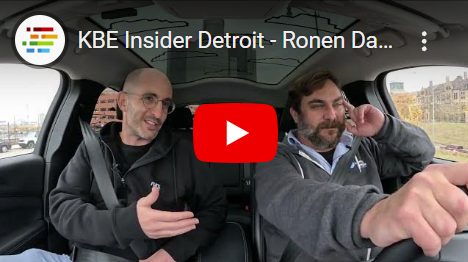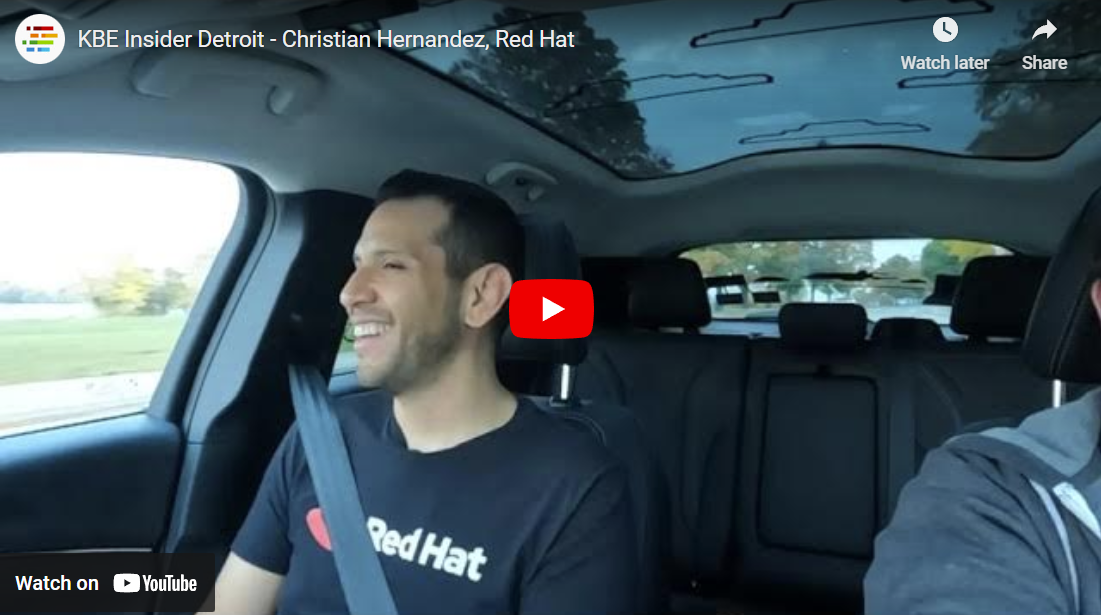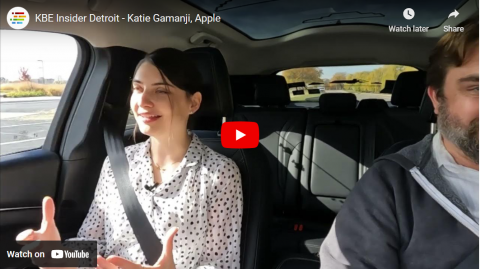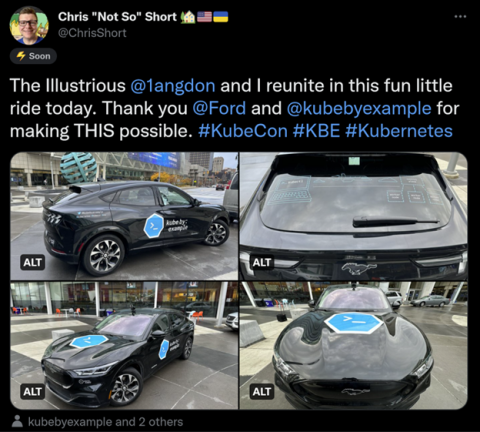Taking a People-First Approach to Enterprise Cloud Native Transformation
Enterprise cloud native transformation is challenging. There are many moving parts - people, processes, and technologies - that need to come together for successful transformation. Among these, putting people at the center of transformation is key.
At the recent KubeCon Europe, KBE Insider had the opportunity to interview Sebastian Kister, who leads the Container Competence Center at Audi AG. During the interview, Sebastian shared how he approaches enterprise cloud native transformation by focusing on people and enablement.
A Transformation Mindset
Sebastian has a background in startups, where he gained experience building scalable solutions and a transformation mindset. He brought these experiences to Audi, where he started building a Kubernetes platform to assist development teams in securely deploying their workloads. His team grew from 3 to 14 members over the years, and now consults various platform teams on how to build and run infrastructure and business integration layers.
Scaling Transformation
Currently, Audi has over 6600 applications that run on-prem, public cloud, and hybrid environments. To scale transformation across these applications, Sebastian's team takes a people-centered approach. Instead of forcing changes through rigid processes and tools, they enable passionate team members to choose the right technologies to solve problems. They then help teams build automation around these technologies, which in turn shapes natural processes. By solving actual problems first, they are able to create solutions that address teams' needs and have high adoption.
Respecting Silos and Enabling Collaboration
Sebastian acknowledges that silos are natural ways for large organizations to organize themselves. Instead of fighting them, his team respects silos but works to enable cross-silo collaboration. They talk to developers and connect them directly to infrastructure teams, bypassing rigid middle layers. They also provide hands-on guidance to help development teams gain skills and confidence in using new technologies. Over time, teams become proficient and require less support, allowing Sebastian's small team to scale their impact.
An Education-First Approach
Education and enablement are key to Sebastian's people-first approach. His team guides the development teams with the cloud native technologies and skills they need to work independently. They start by understanding teams' business goals, then advise them on the best paths to achieve those goals using technologies like Kubernetes, AWS, and Azure. While some lift-and-shift migrations may make sense, most of the work they consult on involves new cloud native applications.
Driving Transformation Through People
By focusing on people, education, and enablement, Sebastian and his team are able to drive cloud native transformation at Audi without enforcing strict rules and processes. They scale their impact through passionate team members and by empowering development teams to solve their own problems in an automated, scalable way. Their people-first approach complements technologies and platforms, and allows Audi to transform at an enterprise scale. Overall, for any organization undertaking cloud native transformation, putting people at the center and investing in their enablement is key to success.
This aligns with KBE Insider's mission of highlighting leaders who are driving transformation through people enablement and education. KBE Insider is proud to bring to you interviews with key contributors in the open source and cloud native space. Our KBE Insider Amsterdam and KBE Insider Detroit series feature conversations with leaders like Sebastian who are enabling transformation from the ground up. We also frequently update our community contributors page to recognize the effort of those building and strengthening the cloud native community. Through these initiatives, we aim to amplify voices and share insights from those at the forefront of innovation. Make sure to visit KBE Insider for the latest stories of people driving change. Transformation requires many parts - but it starts with passionate individuals empowering teams from within.
Full video at: KBE Insider Amsterdam
Follow us: @kubebyexample
Leave anonymous feedback
Join the KBE community forum
Enterprise cloud native transformation is challenging. There are many moving parts - people, processes, and technologies - that need to come together for successful transformation. Among these, putting people at the center of transformation is key.
At the recent KubeCon Europe, KBE Insider had the opportunity to interview Sebastian Kister, who leads the Container Competence Center at Audi AG. During the interview, Sebastian shared how he approaches enterprise cloud native transformation by focusing on people and enablement.





